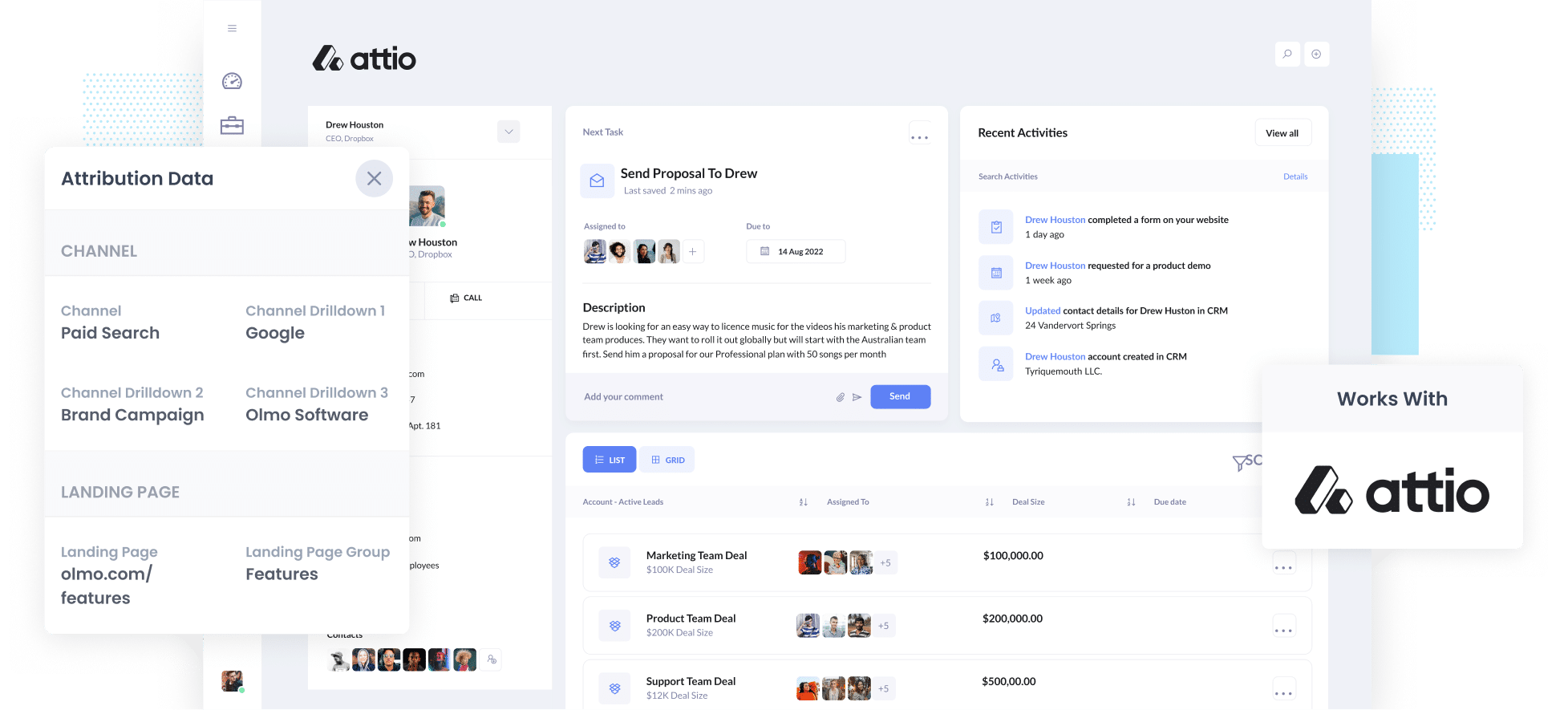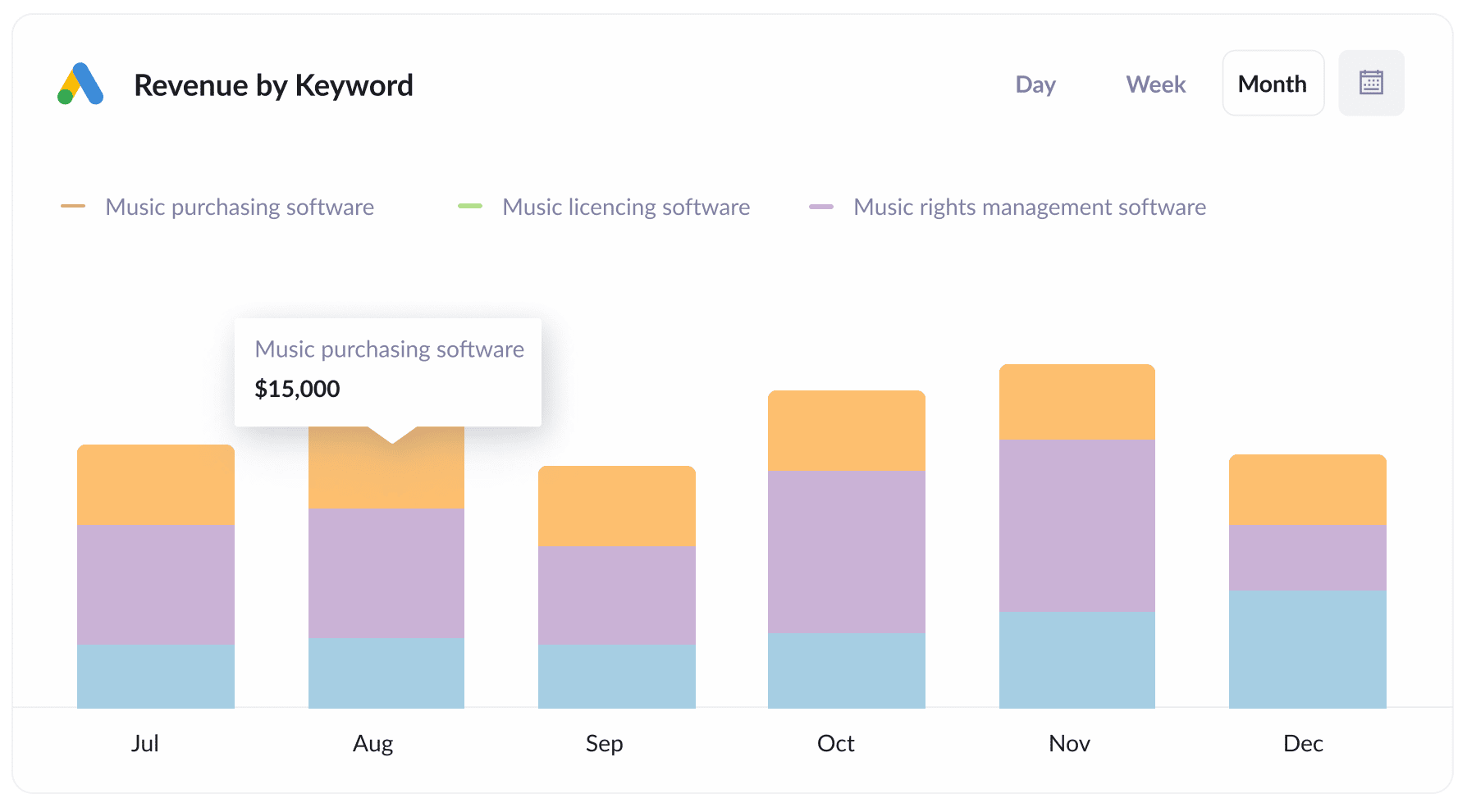The easiest way to get UTM parameters into Attio
Learn how to get UTM parameters into Attio so you can measure which campaigns are generating your leads & customers

Want to understand which of your marketing channels or campaigns are driving the bulk of your leads and customers?
If you’re using Attio as your CRM, then the best way to do this is to capture the UTM parameters you put behind your marketing campaigns and pass them through to Attio with each new lead.
You can then use this data to run reports that show which channels and campaigns are generating your leads, how they’ve converting to customer, etc.
In this post, we'll show you how to use a tool called Attributer to capture UTM parameters in Attio.
4 steps for capturing UTM parameters in Salesforce
It’s easy to capture UTM parameters in Attio when using Attributer. Here's how to do it in 4 easy steps:
1. Add UTM variables to your ads

For Attributer to know where your traffic is coming from, you need to add UTM parameters behind your ads and campaigns.
This includes ads on social networks like Facebook, Twitter and LinkedIn, in search engines like Google and Bing, and in any campaigns you do run in places like trade publications.
To learn how to use UTM parameters and what values to put in each, there’s a handy article here.
2. Add hidden fields to your forms

Next, you need to add some Hidden Fields to your lead capture forms. These hidden fields include:
- Channel
- Channel Drilldown 1
- Channel Drildown 2
- Channel Drilldown 3
- Landing Page
- Landing Page Group
Most form-building tools (like Gravity Forms, WP Forms, Webflow Forms, Wix Forms, etc.) make it really easy to add hidden fields. You just drag and drop a 'hidden' field type into your form.
Full step-by-step instructions for adding hidden fields in dozens of different form builders can be found here.
3. Attributer automatically completes the hidden fields with UTM data

Attributer looks at where your visitors are coming from and then when they submit a form on your website, it fills the hidden fields with the UTM data.
For example, imagine you were a marketer at Attio and someone landed on your website from a brand campaign you were running in Paid Search, it would fill the hidden fields as follows (depending on what UTM parameters you used behind your ads):
- Channel = Paid Search
- Channel Drilldown 1 = Google
- Channel Drildown 2 = Brand Campaign
- Channel Drilldown 3 = Attio
On top of the values from the UTM parameters, it would also capture the visitor's first landing page (I.e. attio.com/features/automations) and the first landing page group (I.e. Features)
4. UTM parameters are passed into Attio

Finally, when a visitor completes a form on your website, all of the UTM parameters and the landing page data are passed into Attio along with the name, email, phone, etc of the lead.
With this data inside Attio, you can report on it using your existing reporting tools (I.e. Attio’s built-in reports, a 3rd-party BI tool, etc).
You can then see which channels are bringing the most leads, what the conversion rate to opportunity is, how many closed/won deals have come from each channel, etc.
What is Attributer?
Attributer is a piece of code that you place on your website.
When a visitor lands on your website, it determines where the visitor came from (by looking at the same things other analytics software like Google Analytics looks at).
It then categorizes each visitor into channels (like Paid Search, Paid Social, Organic Search, etc) and stores this as a cookie in the visitor's browser.
Then, when that visitor submits a lead form, it passes that channel information along with the lead details into your Attio CRM where you can use it to build reports that show which campaigns are driving your leads & customers.
Why using Attributer is better than capturing raw UTM parameters
Attributer does more than just capture raw UTM parameters and pass them into Attio. Here’s a look at what it does:
1. Captures all traffic
Attributer doesn't just capture your UTM parameters and pass them into Attio. It also captures attribution information on visitors who arrive on your site through organic channels where UTM parameters aren't present (I.e. Organic Search, Organic Social, Referral, Direct, etc).
This means you know where ALL your leads are coming from, not just the ones generated by your paid advertising campaigns.
2. Stores the data
Many other ways of capturing UTM parameters require the UTM parameter to be present on the page where the form is completed. This is a problem because the page the visitor completes your form on may not be the same page they arrived on from your ad.
As an example, imagine someone clicks on your Facebook Ad and ends up on a landing page you created for that campaign. They then click on the ‘Contact Us’ or ‘Request a Quote’ button and are taken to your Contact page where they complete a form. This would mean that the page they complete the form on is not the same page they originally landed on, so the UTM parameters will be lost.
Luckily, Attributer works differently. Attributer stores the UTM parameters in a cookie in the user’s browser, so regardless of what page the user completes a form on the UTM parameters will always be passed through.
3. Provides cleaner data
4. Captures landing page data as well
Ever wanted to know the number of leads and customers coming from your blog? Or those in-depth content pieces you’ve invested so much time writing?
On top of capturing UTM parameters, it also captures information like the landing page and landing page category, so you can see how many leads & customers certain content on your site (I.e. your blog posts) are generating.
4 example reports you can run when you capture UTM parameters in Attio
If you are using Attributer to capture UTM parameters in Attio, then there are a whole heap of reports you can run to understand what's working and what isn't.
Before founding Attributer, I ran marketing teams for over 15 years, and in that time spent millions on Google Ads, Facebook Ads, etc.
Below are some of the reports I found most useful over the years:
1. Leads by Channel

Because Attributer enables you to track where ALL your leads are coming from, not just those from paid ad campaigns, you can build reports like the one above that categorize leads based on the channel.
These reports are valuable for understanding which channels are the most effective for generating leads (beyond just paid ad campaigns).
As an example, if Organic Search is responsible for the bulk of your leads, yet most of your budget is allocated to paid ads, it could be beneficial to reallocate some funds towards SEO.
2. Leads by Facebook Ads Network

When you're running ads across Facebook's various networks (like Facebook, Instagram, Messenger, etc) then the report above is just what you need to figure out which network is your top lead generator.
With this information, you can make informed decisions on how to optimize your ad spend. Just by adjusting the targeting settings to focus on the networks that are really making a difference, you'll be able to attract even more leads without spending more money.
3. Customers by Google Ads campaign

The report above shows the number of customers you're getting each month from your various Google Ads campaigns. This report helps you see which campaigns are actually attracting customers, instead of just visitors who don't end up converting.
With this information, you can optimize your Google Ads spend by focusing your budget on those campaigns that are genuinely making you money.
4. Revenue by Keyword

If you add the keyword to the UTM parameters in your Google Ads (which is a breeze with tracking templates), you can see the exact keywords your leads are using to find your business.
This helps you determine which keywords to bid higher on in Google Ads, and also offers valuable insights into which keywords to target for your SEO efforts.
Wrap up
If you want to capture UTM parameters in Attio, then Attributer is a solid solution.
Not only will it capture and pass UTM parameters into Attio, it will also provide you data on leads that come from channels where UTM's aren't present, such as Organic Search, Organic Social, Referral, etc.
Best of all, it's free to get started and usually takes less than 15 minutes to get set up, so start your free trial today!
Get Started For Free
Start your 14-day free trial of Attributer today!

About the Author
Aaron Beashel is the founder of Attributer and has over 15 years of experience in marketing & analytics. He is a recognized expert in the subject and has written articles for leading websites such as Hubspot, Zapier, Search Engine Journal, Buffer, Unbounce & more. Learn more about Aaron here.
